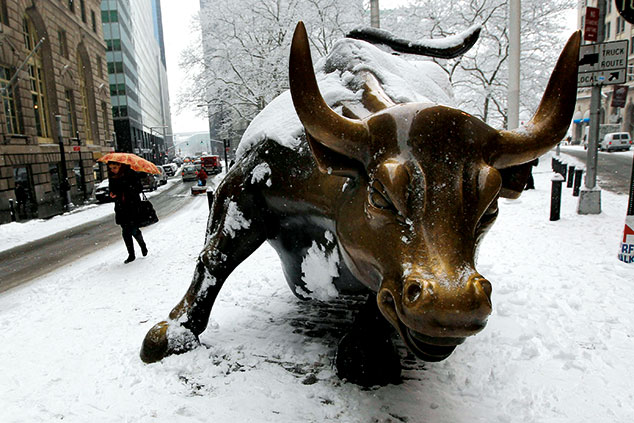
Major equity bull markets begin when you least expect it. On 9 March 2009, sentiment was so dire that The Wall Street Journal contained a story with the headline: “Dow 5,000? There’s a case for it.” The Dow Jones index stood at 6,500 at the time, less than half its 2007 peak of around 14,000. So when stocks ticked up that Monday, nobody would have predicted the second-longest bull run since 1945. Only the stretch between 1990 and 2000 eclipses this nine-year upswing.
Not too hot, not too cold
One of the key drivers of the bull market has been solid – but not spectacular – economic growth. GDP has risen quickly enough to bolster profits, but not so quickly that the US Federal Reserve has felt compelled to raise interest rates significantly to snuff out incipient inflation; price rises have been conspicuous by their absence.
Last month that appeared to be changing, as wage growth seemed to be strengthening. But it fell back again in February. Even though US payrolls jumped by 313,000, the best month since July 2016, annual wage growth slipped to 2.6% from 2.9% in January.
Investors were happy, says Justin Lahart in The Wall Street Journal. It seemed that “the economy can run at a faster rate without wages running too hot”, which in turn implies that the Fed can raise interest rates at a more leisurely pace. Thanks to renewed evidence of not-too-hot-and-not-too-cold growth, in other words, the easy-money party could continue.
Inflation is on its way
One reason for the subdued wage growth was that the pool of workers who had become discouraged in their job hunt and had therefore left the labour force shrank: better prospects have tempted more people to rejoin the ranks of potential employees. But this source of slack probably won’t last much longer, as JPMorgan’s Michael Feroli told Barron’s. The labour participation rate among prime-age workers (25- to 54-year-olds) is almost back to pre-recession levels, so there is little remaining scope for many people to come back into the labour force and hold salaries down by making workers less scarce.
The government’s tax cuts have started to kick in and will also have tempered pressure on employers to raise wages. This is another factor that can’t last forever; expect it to have run its course in a few months.
One month’s data, moreover, can obscure the big picture. As Capital Economics notes, over the past three months the pace of wage growth is up 2.9% on the same three months a year before. The administration is now also adding fiscal stimulus to an economy already growing strongly. Add it all up, and the danger is clear: inflation rises unexpectedly quickly as the labour market keeps tightening and strong demand drives up prices. That would prompt the Fed to raise rates rapidly – bringing the bull market to an abrupt end.